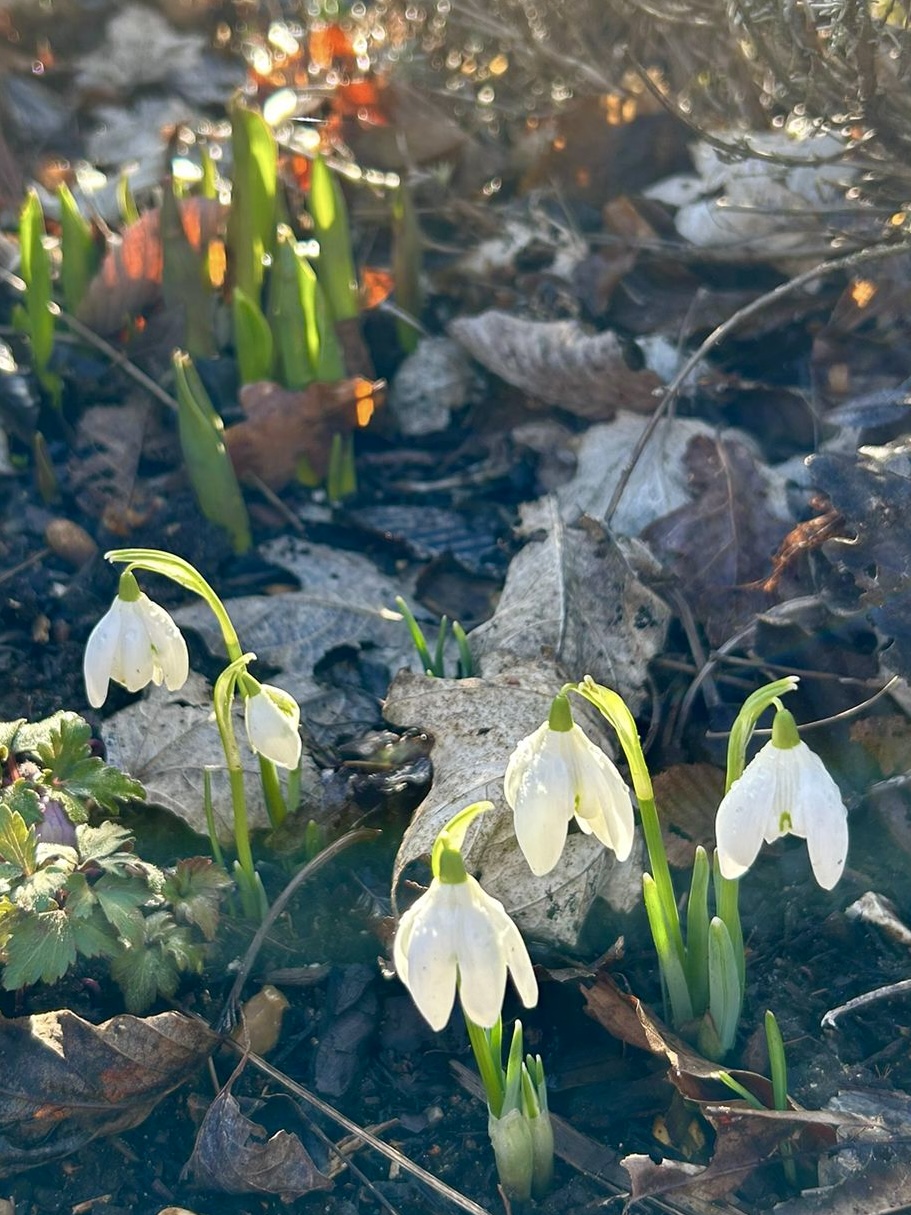
Getting out into gardens in Winter and early Spring for improved wellbeing
New research from the National Garden Scheme recommends getting out into gardens in Winter and early Spring for improved wellbeing –
Inspired by our own Head Gardener’s visit to the snowdrop walk and the marvellous display of Hellebores and winter planting at the NGS member Benington Lordship’s garden, here in the Healing Garden we have been busy this year planting snowdrops ‘in the green’ also cornus ‘midwinter fire’ and hellebores to increase our winter interest. The snowdrops were very kindly donated to us by a gardener from the NGS scheme and by friends of the Healing Garden.
In the Healing Garden birds have been showing interest in the nesting boxes, bugs are coming out of hibernation from our bug hotel and the snowdrops, anemones, crocuses and narcissi have all emerged. The daphnes, sarcococca and viburnums have all been providing a marvellous scent to attract pollinators for their much needed nectar during the winter period.
New research published by the National Garden Scheme has proved that getting out into nature to visit gardens in winter can significantly improve your wellbeing.
Up until now little evidence has been collected about the effects of visiting a garden in winter, however, the environmental psychologist Dr Emma White, has conducted a study which has found that wintertime visitors to National Garden Scheme gardens described in their own words a number of positive feelings while visiting the winter gardens. “They felt relaxed and calm, happy and uplifted, interested and inspired, appreciative of the gardens, immersed and at one with nature, and hopeful of spring. Visitors particularly liked the plants and flowers that could be found in the gardens during the winter”.
Over the winter period, here at the Healing Garden we have been encouraging staff, visitors and patients to enjoy the gardens throughout winter as it is a particularly important time to stop and appreciate the garden for all its winter beauty and interest. Dr White’s research suggests that visiting gardens in winter can be even more valuable than visiting gardens in summer . As the average level of wellbeing is lower in winter than in summer, gardens provide a greater positive change when visited in the cold of winter. This is an important finding, as we may notice ourselves getting into gardens less during a time which many consider to be dormant. But winter gardens can be full of life and interest.
Dr White found: “The more nature visitors observed in the garden, such as birds and insects, the more their wellbeing improved. Many respondents also described enjoying seeing the plants and flowers that emerge despite the cold; almost half of visitors (47.6%) mentioned like of the snowdrops, while 29.2% appreciated the emergence of the first signs of spring and 28.2% the scent of flowers like Daphne.” This tallies with our own experience of visitors to the Healing Garden who frequently comment on their joy at “seeing the snowdrops”
Some respondents simply said that they were “hopeful” or “optimistic”, others wrote that “seeing all the flowers poking through the soil gave me a sense of hope – spring is coming!”. This optimism seemed to come from the appearance of early vegetation and spring flowers, which heralded not only “that spring and garden season is ahead!”, but also warmer weather: “looking forward to better weather. Signs of spring very hopeful”.
George Plumptre, Chief Executive of the National Garden Scheme, added: “Visits to our snowdrop and spring flower gardens are always a popular start to the garden visiting season and this latest research gives us more of an insight into why that is.”
The National Garden Scheme has been promoting the health benefits of visiting gardens since it was founded in 1927. Now opening over 3,500 gardens a year, the scheme offers affordable access to beautiful gardens across the country and throughout the year.
The full report by Dr Emma White, entitled ‘The wellbeing benefits of visiting National Garden Scheme gardens in winter’, can be found here. We hope that Dr White’s research will encourage more people to put on their warmest clothes and to spend more time in gardens enjoying the end of winter and beginning of spring.
